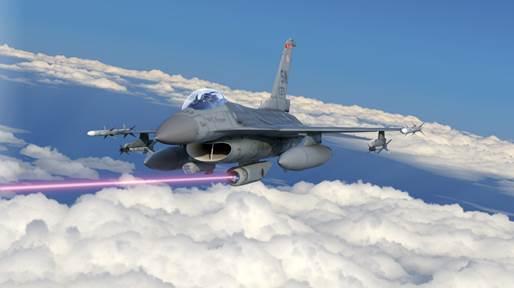
Installing a defensive laser system on a tactical combat aircraft could happen by 2025, Lockheed Martin says.
“Lockheed Martin is working to fly a laser on tactical fighters within the next five years,” said Mark Stephen, Lockheed’s business development lead for strategic technology development.
Lockheed has established a new directed energy system integration laboratory in Orlando, Florida, to focus on the integration of two key technologies of a laser weapon: high-energy lasers themselves and the beam directors.
The laboratory will be certified to begin testing high-energy lasers on the ground with output levels up to 50 kW. Within four years, the facility should be able to accommodate high-energy lasers with output power up to 150 kW, although the first applications on tactical aircraft in 2025 could be significantly less, Stephen said.
Over the past eight years, Lockheed has completed 62 flight tests of a beam director to optimize the systems that focus the laser beam and provide the stability needed to maximize energy on target, Stephen said.
Lockheed also is preparing to make the transition from building components for a small number of experimental prototypes to large-scale production of operational high-energy lasers, Stephen said. The company is investing $20 million in a new optical components center in Orlando, which will expand manufacturing space by 40%, Stephen said.
“We intend to use this space to establish low-risk production processes that enable for us to build critical laser weapon optical components, some of which have never been seen on a production line at the rates our customers need,” Stephen said.
AFRL selected Lockheed in 2017 for a demonstration next year of an airborne laser pod under the Self-protect High Energy Laser Demonstrator (SHIELD) program. The pod, which includes a Northrop Grumman-supplied beam control system and a Boeing aeroshell, seeks to demonstrate a fiber laser in a power class probably between 30 and 90 kW.
“We would look at transitioning the capabilities from Shield into a laser pod with an improved [size, weight and power capacity] based on the investments we’re making,” Stephen said. “So the power level in the next five years will be equivalent to what we’re demonstrating now, but we’ll be able to insert increased power levels as we move forward.”
The SHIELD demonstration has been delayed by two years to 2023, reflecting the challenge posed by the complexity of packaging such a powerful device into a form factor relevant to a tactical aircraft.
“I can tell you they are doing groundbreaking work,” Stephen said. “It is a challenge.”
Due to the amount of power and thermal energy required, Lockheed does not expect to integrate high energy lasers on stealthy, or low-observable (LO) to radar, aircraft within the next five years.
“The first applications will probably not be on LO aircraft,” he said. “They would be on something a little easier.”
CORRECTION: This article has been updated with the correct spelling of Mark Stephen's name.

Comments